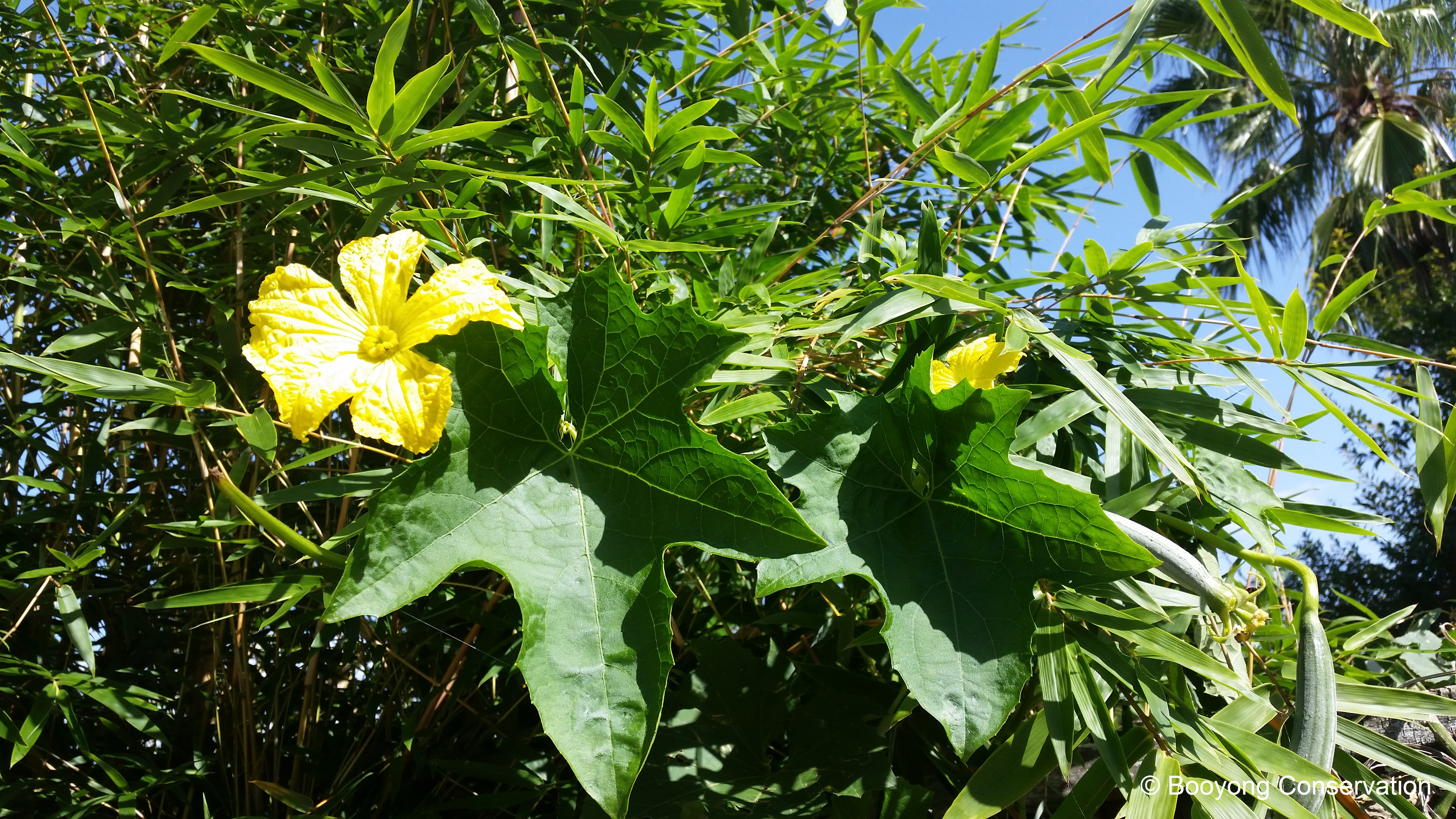Who knew loofahs grow on a vine and not the ocean floor! We were excited to discover they are a plant, not a sea sponge – a beautiful green fibrous gourd grown in your garden.
I received some plants from a local crop swap in Sydney and popped them in the garden to see what happ ened and have been rewarded with numerous large and green gourds. They grow on a vine and the flowers as you can see are a lovely bright yellow.
ened and have been rewarded with numerous large and green gourds. They grow on a vine and the flowers as you can see are a lovely bright yellow.
Loofahs belong to the Cucurbitaceae or gourd family, along with squashes, watermelons, cucumbers and melons. We planted them beneath some reinforced steel along the boundary fence at home in Sydney. As they were planted on a fence line and away from the street light, something (possums or rats) has been having a feast. This has led to us harvesting them when green and drying them out by hanging them inside in the laundry. We will net them when we plant at Booyong next year, so the animals don’t get to them.
It is generally recommended to allow loofahs to remain on the vine until they turn a yellowish brown (up to 150 days). I have felt the fibrous roots and have peeled one to feed my curiosity, and they are quite amazing. Some fruits left on the vine have withered and we have plenty remaining which is quite incredible. We will wait until the green tissues dries out and cracks and then peel them back. If the skin is very dry, soaking the fruit in water first may make it easier to remove. Wash the sponge with water, and if there is discolouring you can treat the sponge with a non-chlorine bleach. The loofah can then be left in the sun to dry.
Once the skin has been removed, shake out the seeds, share them with friends or crop swap and save some for next year. Some people slice the bottom off them before peeling to shake out the large back seeds.
Due to the long season required many people will start the seeds as early as September in small inch pots and transplant them outdoors once the weather warms in November or December. We are starting to harvest now in April.
Loofahs like full sun and a well-drained but moist soil, enriched with plenty of compost or well-rotted manure. They are quite heavy so be sure to grow them on a strong trellis – we found the rio quite adequate. They are compatible with peas, beans, onions and sweetcorn, but avoid growing them near potatoes.
Loofahs are non-abrasive and perfect for washing your face, body and dishes. Ensure it dries in between use and replace it every three to four weeks with a new one. Alternatively, you can soak it in diluted bleach once a week to keep clean. In my research I have also discovered some people have sliced them and placed them into homemade soaps which is a great idea.
One of my permaculture friends said the flower buds, flowers, and very young fruit are often added to dishes like salads, soup, stews, or curries, and can be fried or sauteed in a little oil. Apparently, they taste a little like squash. The vine just seems to keep giving so this may be a good option for the young fruits that don’t form as the frosts come or the weather gets too cold.

You must be logged in to post a comment.